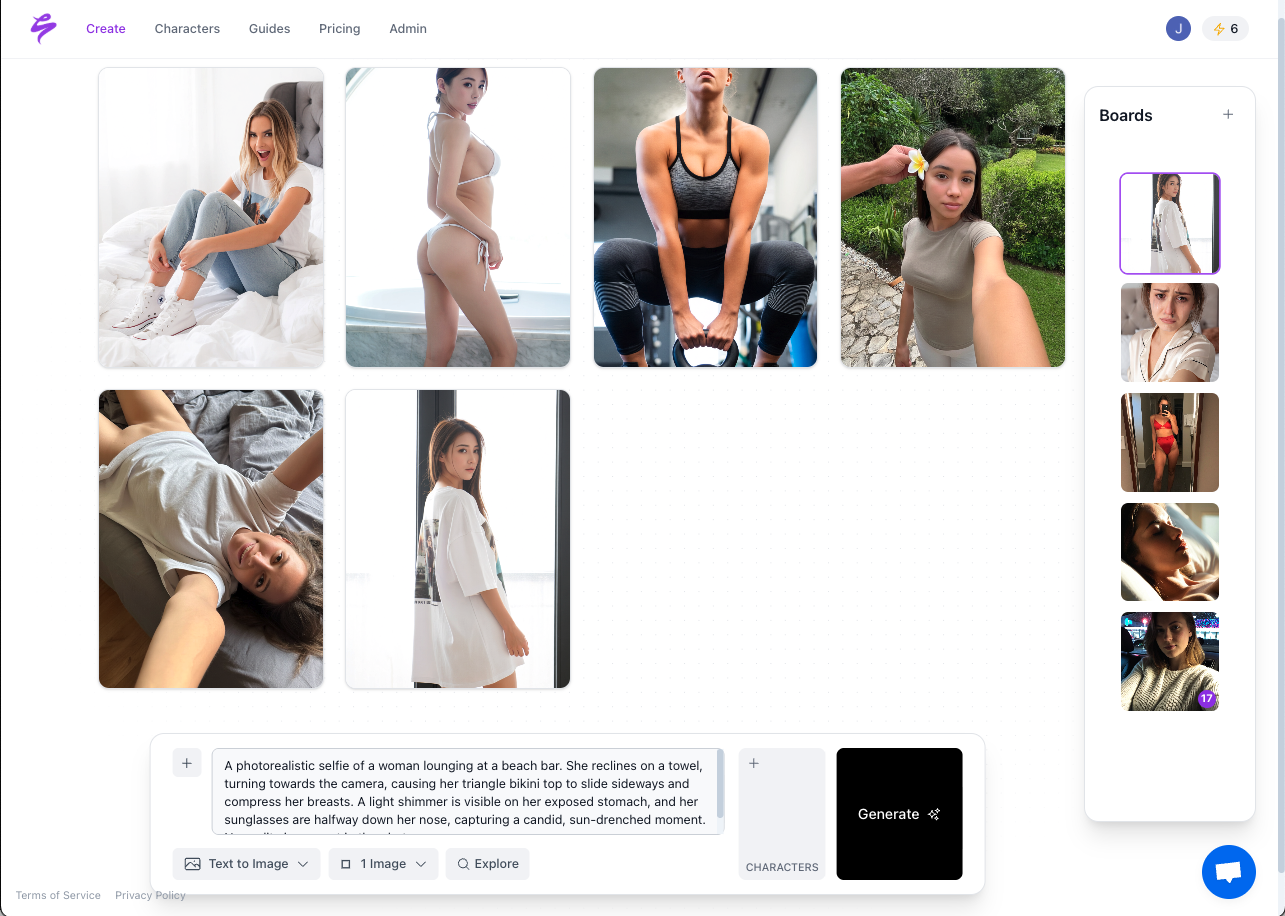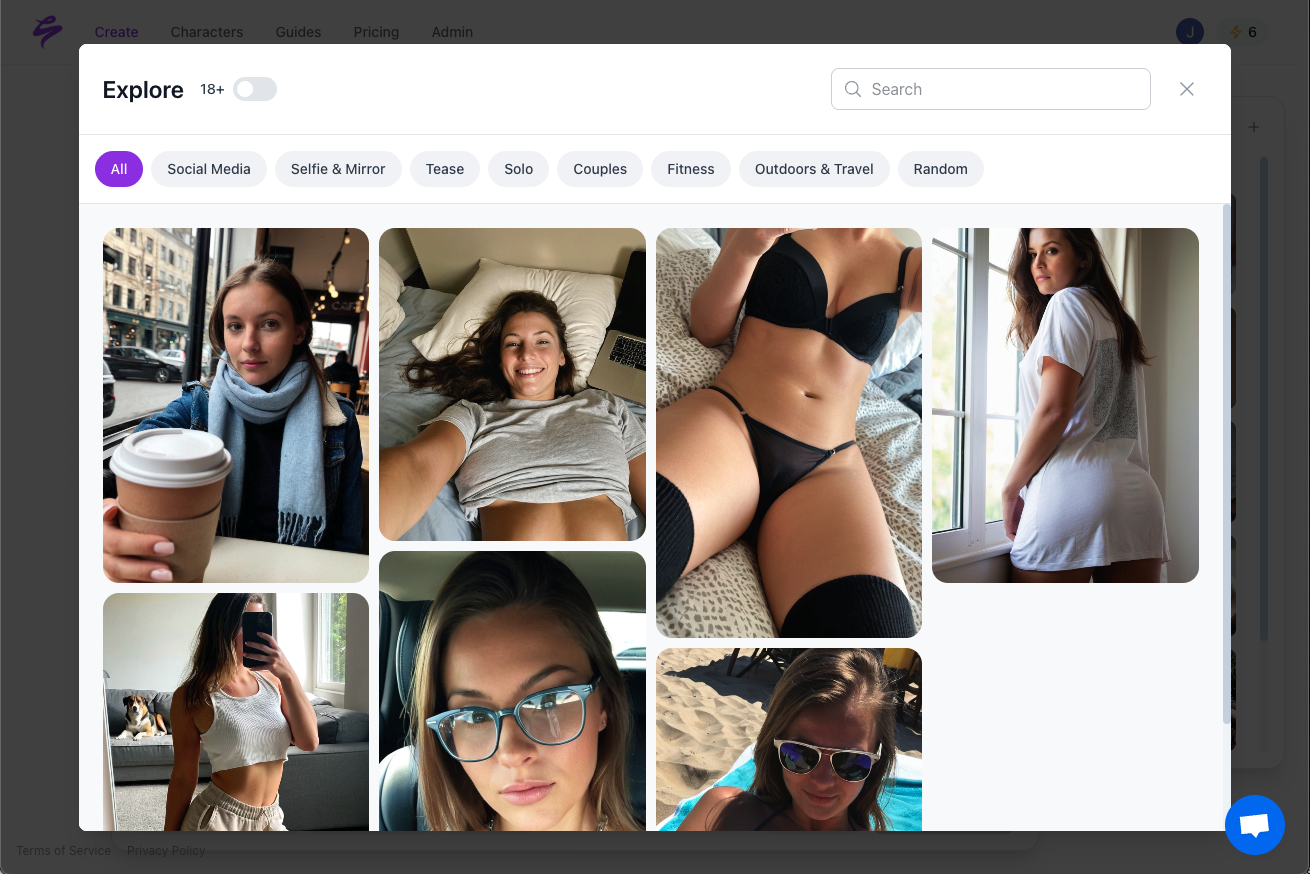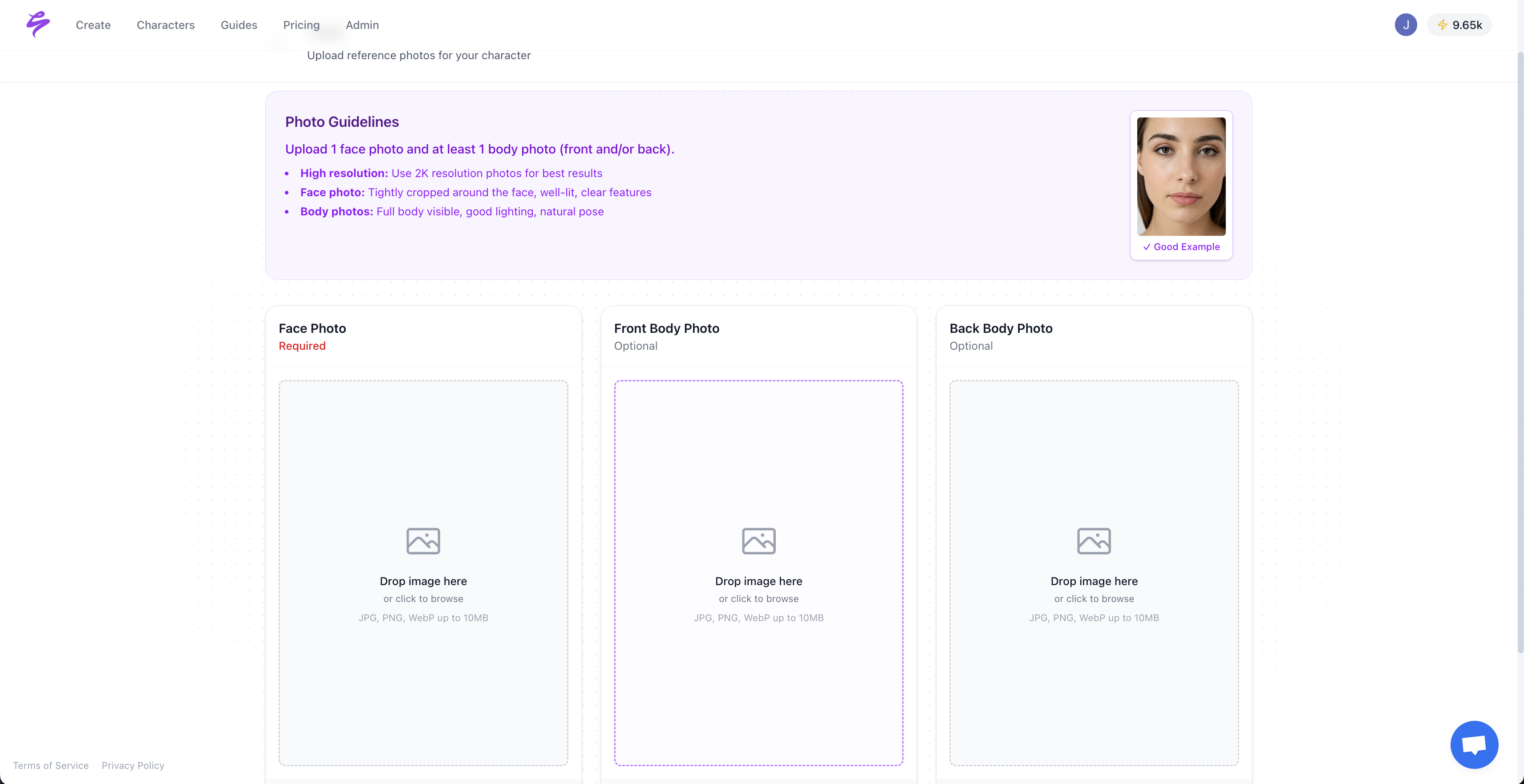Key Takeaways
- Fan demand for new content often exceeds human capacity, so creators and agencies need scalable, on-demand video workflows powered by AI.
- AI video tools can recreate a creator’s likeness, automate key production steps, and deliver hyper-realistic content in minutes instead of weeks.
- Creators and agencies cut costs by replacing equipment, travel, and large production teams with predictable platform fees and rapid iteration.
- Hyper-realism, likeness protection, and monetization-focused workflows are essential for AI content that fans will recognize as authentic and worth paying for.
- Strategic planning, brand consistency, and clear approval workflows help integrate AI into existing creator and agency operations without losing quality.
- Human creativity combined with AI automation gives creators long-term advantages while keeping audience relationships and brand direction firmly in human hands.
The Creator Economy’s Demands: Why On-Demand Video is Essential
The Content Crisis: Why Traditional Methods Fall Short
Today’s creator economy runs on a simple equation: more content leads to more traffic, more sales, and more revenue. Creators still have normal human limits, while fan demand often assumes endless output. This structural imbalance, where demand can exceed supply by an estimated 100 to 1, creates a persistent Content Crisis.
Traditional video production methods cannot keep pace with this ongoing demand. Creators face constant pressure to deliver fresh content across multiple platforms, which often leads to exhaustion and creative burnout. The manual nature of conventional video production, with physical shoots, equipment setup, ideal lighting, and long post-production, creates bottlenecks that limit output and increase costs.
For agencies managing multiple creators, this crisis becomes even more visible. When talent availability becomes the limiting factor, entire operations slow down. Teams wait for assets, posting schedules slip, and revenue streams face ongoing risk of disruption.
The Rise of On-Demand Content: Meeting Infinite Fan Demand
A practical solution lies in breaking the link between a creator’s physical availability and their ability to produce content. On-demand video content generation represents a major shift. It enables creators to generate unlimited, high-quality content without the usual constraints of time, location, or physical presence.
This approach turns content creation from a linear, labor-intensive process into a scalable system. Instead of being limited by human capacity, creators can match the appetite of their audience while maintaining quality and authenticity. Start creating unlimited content today with Sozee and see how an on-demand workflow supports consistent publishing.

What is AI-Powered On-Demand Video Content Generation?
Defining AI Video Generation for Creators
AI-powered on-demand video content generation goes far beyond general AI art tools. It uses a focused system that creates high-fidelity, brand-consistent video outputs tailored to monetizable creator workflows. At its core, this technology applies advanced generative AI and deep learning to reconstruct and animate creator likenesses with highly realistic detail.
The key differentiator lies in output quality and consistency. General AI tools might produce interesting visuals, but creator-focused platforms must deliver content that appears equivalent to traditional shoots. If fans can easily tell that content is AI-generated, commercial value and perceived authenticity decline.
Modern AI video generation platforms can recreate likeness from as few as three photos, with no need for technical training or lengthy setup. This accessibility makes the technology practical for creators who need usable content within hours, not weeks.

Key Terminology for On-Demand Video Production
A clear understanding of the landscape requires familiarity with terms that describe this technology space:
- Avatar/Digital Twin: A hyper-realistic AI recreation of a creator’s likeness that can be used to generate unlimited content
- Likeness Preservation: The technology’s ability to maintain consistent appearance, features, and characteristics across all generated content
- Workflow Automation: Streamlined processes that remove manual steps in video production, from generation to post-production
- Hyper-realism: Content quality that is indistinguishable from traditional camera-shot footage
- Style Bundles: Reusable templates that maintain consistent visual aesthetics across content sets
Revolutionizing Workflows: AI’s Impact on Efficiency and Scale
Automating the Video Production Pipeline
AI fundamentally changes video production by automating complex workflows that once required extensive manual effort. AI can analyze and edit footage within minutes, sharply reducing post-production time compared to traditional methods, while enabling real-time adjustments that help creators meet tight deadlines.
This automation extends beyond basic editing. Modern AI systems handle everything from initial content generation through final optimization for different platforms. AI allows creators and agencies to scale output and accept more projects without adding labor costs, which turns capacity limits into growth opportunities.
The result is a production pipeline where human creativity directs the process, and AI handles most of the execution. Creators can focus on strategy, messaging, and audience engagement instead of technical production details.
Significant Cost Reduction with AI Video Generation
The financial impact of AI video generation is significant. AI tools often cost around $18-$89 per month, while traditional video production can range from $800-$10,000 per finished minute, with savings especially notable for high-volume projects.
These savings come from removing major cost centers in traditional production:
- No need for expensive camera equipment, lighting rigs, or studio rentals
- Elimination of travel costs for location shoots
- Reduced need for large production teams
- Fewer post-production delays that extend project timelines
- Instant iteration capabilities that prevent costly reshoots
AI can reduce production time by up to 80 percent, delivering content in hours or days while traditional workflows often require weeks or months. For creators and agencies working with limited budgets and tight timelines, this efficiency advantage translates directly into stronger margins and more consistent publishing.
Enhancing Creative Freedom and Iteration Speed
AI video generation opens creative possibilities that are often blocked by physical or financial constraints. Creators can test new concepts, styles, and approaches without the usual risk or expense of full productions. Rapid prototyping supports innovation and makes data-driven content optimization practical at scale.
Runway ML excels in speed and agile iteration for short-form content, which makes it well suited to high-frequency production needs in creator and agency workflows. The ability to generate, test, and refine content in near real time helps creators respond quickly to trending topics and audience preferences.
This creative flexibility also supports content that would be impossible or prohibitively expensive to produce with traditional methods, from fantasy environments to elaborate costumes and exotic locations. Get started with Sozee to explore a wider range of creative options and see what becomes possible when production constraints shrink.
Choosing the Right AI On-Demand Video Generation Platform
Understanding Diverse AI Video Tools and Their Use Cases
The AI video generation market includes tools built for different goals and priorities. Choosing between platforms often depends on whether speed or output quality matters more; Runway ML suits fast-paced content delivery, while VEO-3 is better for premium, cinematic projects.
For creators focused on high-volume production, speed and efficiency usually take priority. Runway ML offers strong efficiency and built-in features that support faster and more effective content creation workflows for creators and agencies. Some platforms, such as Kling AI, offer different strengths. Kling AI provides cost-effective video generation with strong lip-sync and Elements controls that can rival established platforms like Runway ML on quality.
The trade-offs become clear when reviewing specific use cases. Kling’s slower generation speed, often 5-30 minutes per video, and lack of built-in editing features make it less suitable for time-sensitive or complex projects, while other platforms prioritize rapid turnaround over maximum fidelity.
Prioritizing Hyper-Realism and Likeness Preservation for On-Demand Content
For monetizable creator content, realism functions as a requirement, not a preference. When fans can quickly identify content as AI-generated, commercial value usually drops and the sense of authenticity that drives engagement and purchasing decisions weakens.
True hyper-realism requires outputs that mimic real cameras, natural lighting, and accurate skin textures. The content must remain indistinguishable from traditional shoots while staying consistent across styles, environments, and expressions. This quality level depends on sophisticated technology that exceeds the capabilities of most general-purpose AI generators.
Privacy and control over likeness reconstruction are equally important. Creators need clarity that their digital likeness remains private and is not used to train other models or shared with unauthorized parties. This security foundation helps creators scale their content without putting their personal brand or safety at risk.
Monetization-First Design: AI Tools for Creator Workflows
The most effective AI video generation platforms focus on real creator monetization workflows instead of one-off AI demonstrations. These systems account for the creator economy’s specific needs:
- Content consistency across multiple platforms and posting schedules
- Agency approval flows that maintain brand standards
- SFW-to-NSFW funnel exports for platform-specific content
- Optimization for platforms such as OnlyFans, Fansly, TikTok, and Instagram
- Reusable style bundles and prompt libraries for efficient content scaling
- Collaborative features that support shared agency-creator workflows

These workflow-focused capabilities separate professional creator tools from general AI art platforms. The difference between generating isolated images and building a sustainable content business comes from these practical, monetization-driven features.
Implementing AI for On-Demand Video: Best Practices and Strategy
Strategic Content Planning with AI for Infinite Output
AI’s near-unlimited generation capacity calls for deliberate planning to maintain impact and audience engagement. Successful creators use content calendars that align AI’s strengths with clear themes, offers, and audience interests.
Monthly content planning becomes more flexible when generation constraints fade. Creators can plan thematic drops, seasonal campaigns, and promotional assets well in advance, knowing that they can generate the required content on demand. This planning also supports cross-platform optimization, where one core concept adapts to TikTok’s short-form format, Instagram’s visual focus, and platform-specific monetization features.
The central goal is balancing quantity with quality so that unlimited generation capability does not lead to audience fatigue. Strategic planning helps maintain anticipation and engagement while increasing the commercial value of each content piece.
Maintaining Brand Consistency and Authenticity in AI-Generated Video
Consistency becomes both easier and more important with AI generation. The technology can produce highly consistent visuals across all content, but this benefit depends on careful setup and management of style parameters.
Effective practices include building prompt libraries that capture proven content styles and maintaining reusable style bundles for different content types. This systematic approach keeps AI-generated content aligned with the creator’s distinctive look and feel across platforms and categories.
Authenticity in AI-generated content comes from preserving the creator’s personality, messaging, and brand voice, even when visuals originate from AI. The technology should amplify the creator’s identity rather than replace it with generic templates.
Seamless Workflow Integration for Agencies and Creators
Effective AI integration requires workflows that serve both solo creators and agency-managed talent. Agencies benefit from clear approval processes that maintain quality standards while still allowing rapid content production.
Collaborative features matter when multiple team members need access to generation and approval workflows. The system should support role-based permissions, version control, and fast feedback cycles that do not slow the production pipeline.
Integration with existing tools and platforms streamlines the entire content lifecycle from generation through posting and performance tracking. Start building your optimized workflow with Sozee and align AI generation with your current creator or agency stack.


The Future of On-Demand Video Content Generation
Addressing Limitations: Emotional Nuance and Continuous AI Evolution
Current AI video generation technology keeps evolving to address remaining limitations. Some AI-generated videos still lack nuanced emotional expression compared to traditional productions, which can limit suitability for certain use cases.
Rapid technological progress is narrowing these gaps. Modern platforms increasingly capture subtle emotional expressions and more natural movement patterns, which makes content feel more engaging and authentic. The trajectory points toward AI systems that can match traditional production on most quality measures and surpass it in speed and flexibility.
For creators, this evolution means staying aware of platform capabilities and choosing when AI generation fits their goals versus when traditional methods still serve specific creative requirements better.
Human-AI Collaboration: Multiplying, Not Replacing, Creators
The future of content creation relies on collaboration between humans and AI rather than outright replacement. Adoption of AI editing tools is shifting roles and required skills, increasing the importance of expertise in AI platforms, workflow automation, and prompt design.
Creators who embrace this shift gain clear competitive advantages. They can produce more content, test creative ideas without heavy resource commitments, and focus their energy on strategy and audience connection instead of technical production work.
This collaboration model allows creators to scale their personal brand and reach while keeping the direct, human connection with audiences that supports long-term success. AI amplifies human creativity, providing new ways to combine technological capability with human insight.
Frequently Asked Questions about On-Demand Video Content Generation
Realism of on-demand video generation compared to real shoots
Modern AI video generation platforms designed for creators can produce hyper-realistic content that is very close to traditional camera work. Results depend on the platform’s technology, the quality of input photos used for likeness reconstruction, and how prompts are structured. Professional-grade platforms focus on replicating real lighting conditions, natural skin textures, and authentic camera characteristics to reach broadcast-level quality.
Typical speed of AI video generation with platforms like Sozee.ai
AI video generation speed varies by platform and content complexity. Professional creator-focused platforms typically generate high-quality content within minutes instead of hours. Many advanced systems can work with as few as three photos and begin generating content almost immediately. The full workflow, from concept to finished video, often takes a fraction of the time required for traditional production, which makes daily content output more realistic.
Types of on-demand content AI video platforms can create
AI video generation platforms designed for creators can produce a wide range of content, including promotional videos, social media posts, educational content, entertainment clips, and platform-specific monetized content. The technology can place the creator in almost any environment, style, or wardrobe without physical limitations. Output can range from SFW social media teasers to NSFW premium content, with assets optimized for TikTok, Instagram, OnlyFans, Fansly, and other platforms. The primary limits are creative direction and the platform’s ability to maintain consistency and quality.
Likeness and data safety with AI video generation platforms
Reputable AI video generation platforms treat privacy and data security as core features. A creator’s digital likeness should be stored in private, isolated models that are not shared with other users or used to train general AI systems. Clear data ownership policies, secure storage infrastructure, and transparent privacy practices help protect creators. Professional platforms built for creators recognize that likeness protection is essential for trust and for scaling content safely.
Cost advantages of AI video generation for creators and agencies
AI video generation removes many traditional production costs, including equipment rentals, studio space, lighting setups, crew expenses, travel costs, and long post-production cycles. Instead of paying per shoot or per video, creators usually pay a predictable monthly platform fee. The technology also reduces opportunity costs by enabling rapid content iteration and testing without expensive reshoots. For agencies managing multiple creators, AI generation supports steady content pipelines that reduce risk and make resource allocation across clients more efficient.
Conclusion: Unlock Unlimited Potential with On-Demand Video Content Generation
The creator economy increasingly favors those who can produce high-quality content at scale without relying only on traditional production. AI-powered on-demand video content generation helps resolve the Content Crisis and creates new opportunities for creators and agencies to grow while preserving authenticity and quality.
The technology has matured from experimental tools into practical, creator-focused platforms that support real monetization workflows. From solo creators seeking more flexibility to agencies managing complex talent rosters, AI video generation offers the scalability, efficiency, and consistency needed to compete in today’s content environment.
Long-term success in the creator economy now depends on tools that extend human creativity instead of limiting it. Creators who pair their own ideas and on-camera presence with AI-powered production gain more control over output, timing, and revenue.
Creators and agencies can now upgrade their content strategy and pursue scalable growth with on-demand video content generation. Sign up for Sozee today to multiply your creative output while protecting your time and building a more resilient business in the creator economy.
